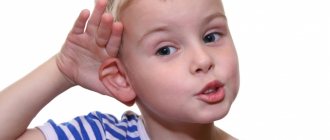Games and exercises for developing proper air flow in children.
The source of the formation of speech sounds is an air stream leaving the lungs through the larynx, pharynx, oral cavity or nose to the outside. Correct speech breathing ensures normal sound production, creates conditions for maintaining normal speech volume, strictly observing pauses, maintaining fluency of speech and intonation expressiveness. Disturbances in speech breathing can be a consequence of general weakness, adenoid enlargements, various cardiovascular diseases, etc. Imperfections of speech breathing such as the inability to rationally use exhalation, speech while inhaling, incomplete renewal of air supply, etc., negatively affecting the development of speech children may be caused by improper upbringing and insufficient attention of adults to children’s speech. Children who have weakened inhalation and exhalation, as a rule, speak quietly and have difficulty pronouncing long phrases. If air is used irrationally, the fluency of speech is disrupted, since children are forced to take in air in the middle of a sentence. Often such children do not finish the words and often pronounce them in a whisper at the end of the phrase. Sometimes, in order to finish a long phrase, they are forced to speak while inhaling, causing speech to become unclear, convulsive, and choking. A shortened exhalation forces you to speak phrases at an accelerated pace, without observing logical pauses. When starting to develop speech breathing in a child, it is necessary first of all to form a strong, smooth oral exhalation.
At the same time, it is necessary to teach the child to control the exhalation time and use air sparingly.
Additionally, the child develops the ability to direct the air stream in the desired direction. During the games described in the article, constant monitoring of correct breathing is necessary. Remember the parameters of correct oral exhalation: - exhalation is preceded by a strong inhalation through the nose - “take a full chest of air”; - exhalation occurs smoothly, and not in jerks; — during exhalation, the lips form a tube; you should not purse your lips or puff out your cheeks; - during exhalation, the air comes out through the mouth, you should not allow the air to escape through the nose (if the child exhales through the nose, you can pinch his nostrils so that he feels how the air should come out); - you should exhale until the air runs out; — while singing or talking, you should not take in air with frequent short breaths. When playing games aimed at developing a child's breathing, it is necessary to keep in mind that breathing exercises quickly tire the child and can even cause dizziness. Therefore, such games must be limited in time (you can use an hourglass) and be sure to alternate with other exercises. The games and exercises listed below will help teach your child to smoothly exhale a strong, directed stream of air through his mouth. Games and exercises for developing smooth oral exhalation Fly, butterfly! Goal:
development of long continuous oral exhalation;
activation of the labial muscles. Equipment:
2-3 bright paper butterflies.
Progress of the game:
Before starting the lesson, tie a thread 20-40 cm long to each butterfly, attach the threads to the cord at some distance from each other.
Pull the cord so that the butterflies hang at the level of the standing child’s face. The teacher shows the child butterflies and invites them to play with them. - Look how beautiful the colorful butterflies are! Let's see if they can fly. The teacher blows on butterflies. - Look, they're flying! How alive! Now you try to blow. Which butterfly will fly farthest? The child stands near the butterflies and blows on them. It is necessary to ensure that the child stands straight, does not raise his shoulders when exhaling, blows on one exhalation without taking in air, does not puff out his cheeks, and slightly pushes his lips forward. You can blow for no more than 10 seconds with pauses to avoid dizziness. Breeze Goal:
development of strong smooth oral exhalation;
activation of the labial muscles. Equipment:
paper plumes (brooms).
How to play:
Before starting the game, you need to prepare the brooms.
To do this, attach strips of colored paper to a wooden stick. You can use thin tissue paper or a “rain” Christmas tree decoration. The teacher offers to play with a broom. Shows how to blow on paper strips, then offers to blow on the child. - Imagine that this is a magic tree. The breeze blew and the leaves rustled on the tree! Like this! Now you blow! The game can be played individually or in a group of children. In the second case, children blow on their brooms at the same time. Autumn leaves Purpose:
teaching smooth free exhalation;
activation of the labial muscles. Equipment:
autumn maple leaves, vase
Game progress:
Before class, collect a bouquet of autumn leaves (preferably maple, as they have long stems) with your child and place them in a vase.
Offer to blow on the leaves. — You and I collected beautiful leaves in the park. Here is a yellow leaf, and here is a red one. Do you remember how the leaves rustled on the branches? Let's blow on the leaves! An adult, together with a child or a group of children, blows on the leaves in a vase and draws their attention to the rustling sound the leaves make. Leaf fall Goal:
teaching smooth free exhalation;
activation of the labial muscles. Equipment:
yellow, red, orange leaves cut out of thin double-sided colored paper;
bucket. Progress of the game:
The teacher lays out leaves on the table and reminds the children about autumn.
- Imagine that it is autumn now. Red, yellow, orange leaves fall from the trees. The wind blew and scattered all the leaves on the ground! Let's make a wind - let's blow on the leaves! The adult and the children blow on the leaves until all the leaves are on the floor. In this case, it is necessary to ensure that oral exhalation is carried out correctly, as well as to ensure that children do not become overtired. - All the leaves on the ground... Let's collect the leaves in a bucket. The teacher and children collect leaves. Then the game repeats again. It is snowing! Goal:
formation of a smooth long exhalation;
activation of the labial muscles. Equipment:
pieces of cotton wool.
Progress of the game:
The teacher lays out pieces of cotton wool on the table and reminds the children about winter.
— Imagine that it is winter now. Snow is falling outside. Let's blow on snowflakes! An adult shows how to blow on cotton wool, the children repeat. Then everyone raises the cotton wool and the game is repeated again. Dandelion Goal:
development of smooth, long exhalation through the mouth;
activation of the labial muscles. Progress of the game:
The game is played outdoors - in a clearing where dandelions grow.
The adult invites the children to find among the yellow dandelions the ones that have already bloomed and pick them. Then he shows how you can blow on a dandelion to make all the fluff fly off. After this, he invites the children to blow on their dandelions. - Let's blow on the dandelions! Blow once, but strongly, so that all the fluff flies off. Look, the fluffs are flying like little parachutes. You can arrange a competition: each child blows on his own dandelion once. The winners are those children who do not have a single fluff left on the head of the flower. You can also organize the game “Grandfather or Woman?”: - Let’s play the game “Grandfather or Woman?”! Blow on your dandelions only once. If there are no fluffs left on the flower head, it is a bald head. So it turned out to be a grandfather. If the fluff remains - these are hairs on the head - then it turns out to be a woman. The one who gets the grandfather wins! Pinwheel Goal:
development of long, smooth exhalation;
activation of the labial muscles. Equipment:
spinning toy.
How to play:
Before starting the game, prepare a spinning toy.
You can make it yourself using paper and a wooden stick. Show your child the fidget spinner. On the street, demonstrate how it begins to spin when the wind blows. Then offer to blow on it yourself: - Let's make some wind - let's blow on the turntable. That's how it turned out! Blow even harder and the spinner spins faster. The game can be played individually or in a group of children. Song of the wind Goal:
development of a strong smooth exhalation;
activation of the labial muscles. Equipment:
Chinese wind song bell.
How to play:
Hang the bell at a distance convenient for the child (at the level of the face of a standing child) and offer to blow on it.
Pay attention to how melodic the sound is. Then suggest blowing harder - the sound has become louder. The game can be played individually or in a group of children. Fly, birds! Goal:
development of long-term directed smooth oral exhalation;
activation of the labial muscles. Equipment:
2-3 colorful birds folded from paper (origami).
Progress of the game:
The child is sitting at the table.
One bird is placed on the table opposite the child. The teacher invites the child to blow on the bird so that it flies as far as possible (you can blow once). - What a beautiful bird you have! Can she fly? Blow so that the bird flies far away! You can blow once. Inhale and get more air. The bird has flown! During a group game, you can arrange a competition between two or three children: each blows on his own bird. The one whose bird flies farthest wins. The adult makes sure that the children do not puff out their cheeks, blow only once, and do not strain too much. Roll, pencil! Goal:
development of long, smooth exhalation;
activation of the labial muscles. Equipment:
pencils with a smooth or ribbed surface.
Progress of the game:
The child is sitting at the table.
Place a pencil on the table at a distance of 20 cm from the child. First, the adult shows how to blow forcefully on a pencil so that it rolls to the opposite end of the table. Then he invites the child to blow on the pencil. The second participant in the game catches the pencil at the opposite end of the table. You can continue the game by sitting opposite each other and rolling each other's pencil from one end of the table to the other. When organizing a game in a group, you can arrange a competition: two children sit at a table with pencils in front of them. You can only blow on the pencil once. The one whose pencil rolls farthest wins. Fun balls Goal:
development of strong, smooth, directed exhalation;
activation of the labial muscles. Equipment:
light plastic ball.
How to play:
You can play with balls in the same way as with pencils (see previous game).
You can make the game more difficult. Draw a line on the table. Then take the ball and place it in the middle of the table (on the line). Two children sit at a table opposite each other, on opposite sides of a ball on a line. - You need to blow on the ball so that it rolls to the opposite side of the table. And you need to try so that the ball does not fall on your part of the table. You need to blow harder. Let's start! The winner is the one who managed to blow the ball over the line, onto the opposite side of the table. Balloon Goal:
development of a strong, smooth oral exhalation;
activation of the labial muscles. Equipment:
a regular balloon on a string;
gas balloon. How to play:
Hang the balloon at the level of the child's face.
Blow on the balloon so that it flies high, then offer to blow on the child. A more complex version of the game is possible. Throw the balloon up. Invite your child to blow on the ball several times so that it does not fall to the floor longer. - Let's blow on the ball so it doesn't fall down. Like this! Stronger! You can play with a balloon filled with gas. In this case, the ball is tied to a chair or something on the floor (it is advisable that the string remains long). You need to blow on the ball so that it flies as far forward as possible. If the game is played in a group, you can organize a competition: two children (or small teams) stand opposite each other facing the ball (distance to the ball is 50-60 cm) and simultaneously begin to blow. The winner is the one who managed to send the ball to the opposite territory (you can divide the territory using a ribbon or rope). Sail, little boat! Goal:
development of strong, smooth, directed exhalation;
activation of the labial muscles. Equipment:
paper or plastic boats;
bowl of water. How to play:
Place a bowl of water on a low table with a paper boat floating in it.
At first, it is better to use a plastic boat, as paper boats quickly get wet and sink. An adult blows on the boat, then offers to blow on the child. - Imagine that this is the sea. Let's set the boat sailing. Look how strong the wind is! How quickly our ship sailed. Now try it. Well done! The game can be complicated by inviting the child to ride a boat from one city to another, marking the cities with icons on the edges of the pelvis. In this case, the air stream during oral exhalation should not only be strong, but also directed. You can play the game in a group. In this case, organize a competition to see whose boat will sail to the goal faster. Ducks Goal:
development of a strong, smooth, directed exhalation;
activation of the labial muscles. Equipment:
rubber duck with ducklings (bathing set);
other lightweight rubber or plastic toys that float in water. How to play:
Place a bowl of water on a low table.
The teacher shows the child a duck with ducklings and invites them to play. - Imagine that this is a lake. A duck and ducklings came to the lake. This is how a duck swims. An adult blows on toys and offers to blow on the child. Then the game gets more difficult. - Look: the ducklings have swam far from their mother. The duck calls the ducklings to come to her. Let's help the ducklings swim to their mother duck as quickly as possible! In this case, the air stream during oral exhalation should not only be strong, but also directed. You can play the game in a group of children. Gurgles Purpose:
development of strong oral exhalation;
learning how to blow through a straw; activation of the labial muscles. Equipment:
glass of water, cocktail straws of different diameters.
How to play:
Place a cocktail straw in a glass half filled with water and blow into it - bubbles will rise to the surface with a loud gurgle.
Then give the tube to the child and ask him to blow. - Let's make funny buns! Take a straw and blow into a glass of water. If you blow weakly, you get small gurgles. And if you blow too hard, you get a whole storm! Let's create a storm! By looking at the “storm” in the water, you can easily estimate the strength of the exhalation and its duration. At the beginning of classes, the diameter of the tube should be 5-6 mm, later you can use thinner tubes. Many children who are accustomed to drinking juice from bags through a straw do not immediately understand what is required of them and may start drinking water (therefore, it is better to use purified drinking water just in case). In this case, first suggest blowing through the tube onto a piece of cotton wool on the table or onto your palm to feel the air coming out of the tube. Another possible problem is that the child may bite and chew on the soft tube or bend it. In this case, you can use the body of a gel pen - a transparent tube made of hard plastic. In addition, the child can, holding the tube in his lips, exhale air through his nose. In this case, you should gently pinch the baby’s nose with your fingers and offer to blow again. Grow, foam! Goal:
development of strong oral exhalation;
activation of the labial muscles. Equipment:
glass of water, cocktail straws of different diameters, dishwashing liquid.
Progress of the game:
This game can be offered to the child after he learns to blow well through a straw into a glass of water (does not drink water, does not bend the straw).
Add a little dishwashing liquid to the water, then take a straw and blow into the water - with a loud gurgle, a cloud of iridescent bubbles will grow before the child's eyes. Then offer to blow on the child. When there is a lot of foam, you can blow on it. - Now I'm going to do hocus pocus! I take the dishwashing liquid and drop it into the water... Now I’ll stir it - ary-bar-top-top-top! I take a pipe and blow. Look what happened! This is a foam of small and large bubbles! Now you try to blow. After children learn to act correctly in individual lessons - blowing into straws, not spilling water, etc., you can conduct such a lesson in a group. Birthday Goal:
development of strong, long, smooth oral exhalation;
activation of the labial muscles. Equipment:
chocolate covered marshmallows or marshmallows;
small cake candles; Teddy bear. How to play:
Prepare chocolate-covered marshmallows or marshmallows and stick one or more holiday candles - today is the bear’s birthday. Together with your child, set the table using toy dishes, invite guests - a bunny and a doll, and sing a song for the bear. Then ceremoniously bring in the “birthday cake” with a lit candle. -It’s the bear’s birthday today. He is one (or more) years old. Let's congratulate the bear! Here's a birthday cake - help the bear blow out the candles. When the child blows out the candle, make sure that the exhalation is long, strong and smooth. Explain to the baby that he has several attempts, in each of which he can only blow once. If the candle does not go out, we take air into the chest again and try again. Many children, when exhaling correctly, cannot correctly direct the stream of exhaled air - it passes by the candle flame. In this case, it is useful for clarity to suggest blowing into a pipe made of a sheet of thick paper (diameter 3-4 cm), because Using the pipe, you can control the direction of the exhaled air. First, place the candle at a distance of about 30 cm from the child. Gradually, the distance from the child to the candle can be increased to 40-50 cm. Explain to the child that you should not move too close to the candle. For subsequent games with blowing out the flame, select candles with a stable base or standing on a reliable candlestick. You can come up with a different plot for the game or simply offer to blow out the flame. For safety reasons, this game is played individually. It is necessary to warn the child that the candle should not be touched or knocked over.
Feather, fly!
Goal:
development of strong, smooth, directed exhalation;
activation of the labial muscles. Equipment:
bird feather.
How to play:
Throw the feather up and blow on it without letting it fall down.
Then offer to blow on the child. Pay his attention to the fact that you need to blow hard, directing the stream of air towards the feather from bottom to top. Soap bubbles Purpose:
development of strong smooth exhalation;
activation of the labial muscles. Equipment:
a bottle with soap solution, a frame for blowing bubbles, straws of various diameters - cocktail ones, made of thick paper, a plastic bottle with the bottom cut off.
How to play:
Play soap bubbles with your child: first, the teacher blows bubbles, and the child watches and catches them.
Then encourage your child to blow the bubbles themselves. It should be noted that blowing soap bubbles is often a rather difficult task for children. Try to help your child - select different frames and tubes so that the child can try and choose which is easier to achieve the result. You can make your own liquid for soap bubbles: add a little dishwashing liquid and sugar to water. Do not forget to monitor the safety of the child - do not allow him to try or drink the liquid. Whistles Purpose:
development of strong smooth exhalation;
activation of the labial muscles. Equipment:
children's ceramic, wooden or plastic whistles in the shape of various birds and animals.
Progress of the game:
Before starting the lesson, you should prepare the whistles.
Give the children whistles and invite them to blow on them. - Look how beautiful your whistle toys are! Masha has a bird, and Vanya has a deer. Let's have a forest concert - each of the animals and birds sings their own song! The game can be repeated several times. Make sure that children blow without straining or overtiring. The game can be played individually or in a group of children. Policeman Goal:
development of strong smooth exhalation;
activation of the labial muscles. Equipment:
whistle
Game progress:
Before starting the lesson, you should pick up the whistles and choose those that are easier to blow.
Hand out whistles to the children and invite them to play police officers. - Who knows what a real policeman has? A pistol, a baton and, of course, a whistle. Here are the whistles - let's play policemen! When a policeman sees an intruder, we blow the whistle! The game can be repeated several times. Make sure that children blow without straining and do not become overtired. The game can be played individually or in a group of children. Blow the pipe! Goal:
development of strong smooth exhalation;
activation of the labial muscles. Equipment:
various wind musical instruments: pipes, pipes, horns, harmonicas.
Progress of the game:
Before starting the lesson, you should select the tools.
Remember that playing wind instruments is one of the most difficult exercises for developing breathing. Therefore, check the instruments in advance and choose those that are easier to play. Give the children pipes and invite them to play them, first one by one, then everyone together. - Let's have a musical parade! Grab your pipes and let's start playing! If one of the children is unable to extract a sound from the pipe, make sure that he is blowing correctly: the exhalation through the mouth should be strong and fall exactly into the bell of the pipe, for which it must be pressed tightly with the lips: the air should not escape through the nose. You can also offer pipes, horns, and harmonicas for playing. The game can be played individually or in a group of children. If one of the children does not succeed, do not insist. It may be better to return to this task later, when the child is a little older. Musical bubble Purpose:
development of strong smooth exhalation;
activation of the labial muscles. Equipment:
clean glass vial (vial height about 7 cm, neck diameter 1-1.5 cm).
Progress of the game:
The teacher shows the children a bottle and offers a game.
- How do you figure out what it is? That's right, a bubble. What can you do with the bubble? Pour water into it. Pour vitamins into the bottle. What else? Do not know! Now I'll show you a trick! This is a musical bubble that sounds like a trumpet. The teacher brings the bottle to his lips, blows into the neck, extracting a sound from it. Then he invites one of the children to blow into another bottle. It should be remembered: for the bubble to buzz, the lower lip must lightly touch the edge of its neck. The air stream must be strong. You should blow for several seconds without straining. Since the game requires the use of glass bubbles, for safety reasons the game is played individually, or during a group lesson, children blow into the bubbles in turns. If one of the children does not succeed in this task, do not insist. It may be better to return to it later, when the child is a little older. Blow up the toy! Goal:
development of strong smooth exhalation;
activation of the labial muscles. Equipment:
various small inflatable toys;
Balloons. Progress of the game:
The teacher hands out well-washed rubber inflatable toys to the children and offers to inflate them.
You should blow by taking in air through your nose and slowly exhaling it through your mouth into the hole of the toy. - Look, our toys are very sick - thin, without bellies... How can we play with them? Let's inflate the toys so that they become plump, healthy and cheerful again! Whoever inflates the toy can play with it. This task requires a formed strong exhalation. In addition, it is necessary to teach children how to hold toys correctly so that air does not escape from them. Offer this game only after a strong, smooth exhalation has already been formed. In subsequent lessons, you can offer to inflate balloons, which is even more difficult. If the child can’t do it, don’t insist. Paper flag Goal:
development of strong, smooth, continuous exhalation;
activation of the labial muscles. Equipment:
strips of thin colored paper (size: 15x2.5 cm).
How to play:
Before starting the lesson, prepare strips of paper. Show children how to blow on the strip by holding it against their lower lip (holding the strip with their thumb and forefinger). - Let's turn paper strips into real flags. To do this you need to make wind - like this! The flags flutter in the wind! This is not an easy exercise; children do not get it right away. It may be better to return to it later, when the child is a little older. The game can be played individually or in a group of children.
You can start training speech breathing itself only after the child has formed a strong, smooth exhalation. Speech breathing training is learning to smoothly pronounce sounds, syllables, words and phrases while exhaling. We offer the following stages of development of speech breathing: - singing vowel sounds - A, O, U, I, E; - prolonged pronunciation of some consonant sounds - S, Z, Ш, Ж, Ф, Х; - pronouncing syllables on one exhalation; - pronouncing words on one exhale; - pronouncing phrases of varying lengths on one exhalation; - reading poems; - singing songs; - expressive story, retelling of texts. A gradual development is expected, a movement from simple to complex. The games listed below will teach the child to smoothly pronounce sounds and syllables while exhaling, which is the initial stage of the development of speech breathing. In games for the development of speech imitation, practicing correct speech breathing is one of the goals of the games. The adult constantly makes sure that when pronouncing syllables, words and phrases, the child uses breathing correctly: speaks only while exhaling, does not draw in air while pronouncing a word, and makes meaningful pauses when pronouncing phrases. Further work on the development of speech breathing - pronouncing long phrases, reading poems, singing children's songs, learning to tell and retell, working on the fluency, pace and rhythm of speech - is not discussed in this article. Such work is carried out at the next stages of speech therapy work with children. Games for developing speech breathing
Sing with me!
Goal: development of correct speech breathing - singing the vowel sounds A, O, U, I, E in one exhalation. Progress of the game: first, the adult invites the children to sing “songs” with him.
- Let's sing some songs. Here is the first song: “A-A-A!” Take in more air—inhale the air. The song should be long. During the game, the teacher monitors clear pronunciation and exaggerates the articulation of sounds. First we sing the sounds A, U, gradually the number of “songs” can be increased. - Here is the second song: “U-U-U!” Now “O-O-O!”, “E-I-I!”, “EE-E-E!” You can arrange a competition between children: the one who sings the longest in one breath wins. - Let's have a competition: we'll all start singing together, the one with the longest song will win. Sounds around us
Goal: development of correct speech breathing - singing the vowel sounds A, O, U, Y in one exhalation.
Progress of the game: an adult invites children to play this game. — In the world around us we hear a variety of sounds. How does a baby cry? “A-A-A!” How does a little bear sigh when his tooth hurts? "OOO!" The plane in the sky hums: “U-U-U!” And the steamboat on the river hums: “Y-Y-Y”! Repeat after me. The adult draws the children’s attention to the fact that each sound should be pronounced for a long time, on one exhalation. Girls sing
Goal: development of correct speech breathing - singing on one exhalation the vowel sounds A, O, U, I, as well as combinations of two vowels - AU, UA, OU, OI, IA, etc.
Equipment: pictures depicting singing girls - articulation is clearly drawn when pronouncing the vowel sounds A, O, U, I. Progress of the game: prepare pictures depicting the faces of singing girls. Such pictures are easy to draw, the main condition is that the articulation must be clearly drawn. 2-4 children can participate in the game. First, the adult shows the children pictures of singing girls and asks them to guess which girl sings which sound. Then he hands out one picture at a time and offers to sing the same sound. After this, a general game is organized: the children line up, holding their pictures in their hands, and the one the adult points to sings. - Now we will sing a common song. Pet will be the one I point at with my wand. Try to keep the songs long. The next stage of the game is singing combinations of two vowel sounds. The teacher offers to repeat the following songs after him: - Let's sing some songs. Here is the first song: “A-A-A-U-U-U!” Take in more air - the song should turn out to be long. And here is the second song: “U-U-U-A-A-A!” Gradually, the number and variations of “songs” can be increased. The same game is then repeated using images of singing girls. The teacher puts two pictures next to each other: the girl sings I, the girl sings A, and asks them to guess what song the girls are singing - IA - and repeat it. This game should first be played individually. Combinations of pairs of vowel sounds can be very different. Blow the ball
Goal: development of correct speech breathing - long pronouncement of the consonant sound F on one exhalation. Progress of the game: invite the kids to play this game: standing on the carpet, spread your arms wide to the sides - you get a ball, then pronounce the sound F for a long time, simultaneously bringing your hands together in front of you - the ball deflates.
At the end, hug yourself by the shoulders - the balloon has deflated. - Let's play marbles! Spread your arms to the sides - like this! These are how big the balls turned out. Suddenly a small hole appeared in the balloon, and it began to deflate... Air comes out of the balloon: F-F-F! The balloon is deflated! Remind the children to inhale more air while the balloon is inflated, and then gradually exhale it smoothly, making the sound F. Do not suck in air. Snake
Goal: development of correct speech breathing - long pronunciation of the consonant sound Sh on one exhalation. Game progress: invite the kids to play snakes.
The game is played on the carpet. - Let's play snakes! The snakes have come out of their holes and are basking in the sun. The snakes hiss: “SH-SH-SH!” Remind children to take a deep breath and hiss for a long time. During prolonged pronunciation of the sound Ш, you cannot take in air. Pump
Goal: development of correct speech breathing - prolonged pronunciation of the consonant sound C on one exhalation. Game progress: invite the kids to play pumps.
The game is played on the floor and is accompanied by movements that simulate inflating a wheel using a pump. — Which of you likes to ride a bicycle? What about by car? Everyone loves it. But sometimes the wheels of cars and bicycles get punctured and deflate. Let's take the pumps and pump up the tires - like this! “S-S-S” - the pumps are running! An adult shows the movements of the pump and explains that you should inhale more air while the pump is running, and then gradually exhale it smoothly, pronouncing the sound C. You cannot take in air while pronouncing the sound. The pump can continue to operate after a pause when the child takes another breath. It is necessary to ensure that children do not overexert themselves while playing. Funny song
Goal: development of correct speech breathing - pronouncing several identical syllables on one exhalation - LA-LA.
Equipment: doll or matryoshka. Progress of the game: invite the kids to sing a funny song with the doll. — Today the doll Katya came to visit us. The doll dances and sings a song: “LA-LA-LA! LA-LA-LA!” Let's sing together with Katya! While singing, make sure that children pronounce three syllables in a row on one exhalation. Gradually, you can learn to sing longer songs on one exhalation - 6-9 syllables in a row. Make sure that children do not get overtired. Fun journey
Goal: development of correct speech breathing - pronouncing several identical syllables in one exhalation - BI-BI, TU-TU. Progress of the game: offer the kids an active game. —Which of you likes to travel? Raise your hands who rode in the car. Now raise your hands who rode the train. Let's play cars - the car is driving and beeping "BEE-BEE!" And now let’s turn into trains - “TU-TU!” Show how the car drives - walk around the room, turning the imaginary steering wheel. Imagining a train, rotate your arms bent at the elbows forward and backward. Make sure that children pronounce two syllables in a row on one exhalation. Gradually, you can learn to pronounce more syllables in one exhalation: BI-BI-BI! TU-TU-TU-TU! Make sure children are not overtired.
The birds are talking
Goal: development of correct speech breathing - pronouncing several identical or different syllables on one exhalation - KO-KO-KO, KU-KU, QUACK-QUACK-QUACK, KU-KA-RE-KU, CHICK-CHIRK. Progress of the game: invite the kids to play birds. - Let's play birdie. The birds met in a clearing and began to talk. “KO-KO-KO,” says the chicken. “KOO-KOO! KOO-KOO!” - the cuckoo screams. “QACK-QACK-QACK!” - the duck quacks. “KU-KA-RE-KU!” - the cockerel cries. “CHIK-CHIRIK,” chirps the little sparrow. Encourage children to repeat the birds' “talk” after you. When pronouncing onomatopoeia, make sure that children pronounce them in one exhalation, without drawing in air.
We will help you write any paper on a similar topic.
- Essay
Games and exercises for developing proper air flow in children.
From 250 rub.
- Test
Games and exercises for developing proper air flow in children.
From 250 rub.
- Course work
Games and exercises for developing proper air flow in children.
From 700 rub.
Receive completed work or specialist advice on your educational project
Find out the cost
Do-it-yourself tutorials for forming an air jet for kindergarten
Methodological development with manuals on the formation of an air jet “Working on an air jet is the key to quickly producing sound”
Author: Tatyana Aleksandrovna Savosina, speech therapist Place of work: MDOU “Kindergarten No. 14 “Hedgehog”, Saratov Description of the material: methodological development with 3 manuals on the topic “Working on an air stream is the key to quickly producing sound.” The manuals will be useful for speech therapists in their work when forming an air stream. The methodological development describes the role of the air stream in the production and assimilation of sounds, the main directions of the air stream, and provides methodological recommendations for corrective work on the air stream; The following is a description of 3 manuals on the formation and development of an air stream with photographs of the manuals. The manuals can be used when working with any age group, but they are more applicable when working with preschool children of the senior and preparatory groups. Goal: building work on the air stream, which affects the effective and rapid acquisition of pure sound pronunciation, achieving results in the field of speech correction. Objectives: 1. To attract the attention of teachers and parents to the problem of speech disorders in children. 2. Develop the strength, directionality, and smoothness of the air stream for quick and effective production of sounds. 3. Induce a positive and joyful emotional mood in class with the help of manuals, stimulate desire and interest in further correctional work. Timely acquisition of literate speech and clear sound pronunciation is of no small importance for the formation of a child’s full and harmonious development. Good speech is one of the main indicators of a child’s readiness to successfully master material at school. Deficiencies in sound pronunciation and other speech disorders can contribute to problematic learning and lead to a young student’s lack of self-confidence, which in turn will signal far-reaching negative consequences. Therefore, it is worth taking care of the child’s speech development in advance, the sooner the better. At present, unfortunately, the number of such children with speech defects, and especially with impaired sound pronunciation, is not only not decreasing, but, on the contrary, increasing. Speech is not our innate ability; it is formed in stages, and the process of its development depends on many reasons. We pronounce all the sounds of our speech, as you know, while exhaling. Accordingly, if the speech exhalation is incorrect, all sounds will sound blurry and unclear. Conversely, mastered correct exhalation - in the middle of the tongue - can normalize the quality of all speech sounds in children, as well as significantly reduce the time spent working on each sound. The production of a strong directed air stream is a necessary condition for sound production. You can work on the development of air flow and speech exhalation in a variety of ways: inflating balloons and soap bubbles, blowing a whistle, harmonica, pipe, blowing out candles. Such toys develop both the strength and duration of the air stream. The direction of exhalation is more difficult to adjust. Here, exercises such as blowing on a protruding tongue are used, where you need to ensure that the air stream goes down the middle of the tongue. The main directions for the air stream are identified: 1) the air stream passes straight through the center of the tongue. This direction corresponds to the pronunciation of most sounds: labiolabial (V, V', F, F', posterior lingual (K, K'. G, G'. X, X'), anterior lingual (T, T', D, D' ), whistling (S, S', Z, Z', C). 2) the stream passes upward through the center of the tongue. This direction is typical for the pronunciation of hissing sounds (Ш, Ж, ШЧ, Ш) and vibrants (Р, Р'). 3) the jet passes along the lateral edges of the tongue. This direction is typical for the pronunciation of stop-passive (L, L') sounds. Formation of an air stream for different groups of sounds: • Wide stream (for pronouncing hissing sounds); narrow jet (for making whistling sounds) • Warm jet (for making hissing sounds); cold stream (for making whistling sounds) • Scattered or directed air stream • Weak or strong air stream In the process of creating the correct air stream, you should adhere to these methodological recommendations: • Carry out exercises in a ventilated room. • The best results are achieved if the exercises are performed in a free body position, not sitting, but standing: the posture is straight, the chest is straightened. • Inhale deeply and calmly through the nose. Exhale through the mouth: light, smooth, long. • Monitor the direction of the air stream. • Exercises do not last longer than 3 minutes. • The amount and pace of exercises should be dosed correctly: blow intensely no more than 5 times. • Make sure that your cheeks do not puff out during exercise. • Exhaled air must not be retained. • Exercises are easier to do by counting. • For visual control at the initial stages, the use of a mirror is allowed. • The exhaled air stream is controlled using a cotton swab brought to the child’s mouth: if done correctly, the cotton swab will deflect. Work on the development of an air stream begins at the preparatory stage of the formation of correct sound pronunciation, along with the development of phonemic hearing and articulatory motor skills. I offer teaching aids that I have developed that will help produce a strong and smooth air stream. The manuals are colorful, attract attention and arouse children's interest in the activity. With such aids you can conduct a lesson in a playful way. 1. A cup of hot tea.
Aid for developing the duration and smoothness of the air stream, for developing a directed air stream.
Instructions: You need to cool the hot tea. To do this you need to blow steam. 2. Butterfly
Aid to produce a strong, long-lasting smooth air stream.
Instructions: Blow hard on the butterfly and it will fly away from the flower. 3. Hedgehog collects mushrooms
Aid to produce a strong, long-lasting smooth air stream. Instructions: Let's help the hedgehog collect mushrooms. But first you need to find them under the leaves. Blow on the leaves and help the hedgehog find all the mushrooms. We work on the formation of an air stream from the very first lessons, and the correction of sound pronunciation will be quick and timely.
We recommend watching:
Do-it-yourself cut-out pictures for preschoolers Methodological development of a thematic walk for children of senior preschool age Educational games in fine arts lessons Ways to implement the Federal State Educational Standard in fine arts lessons
Similar articles:
To the authors
DIY educational panel for kindergarten










